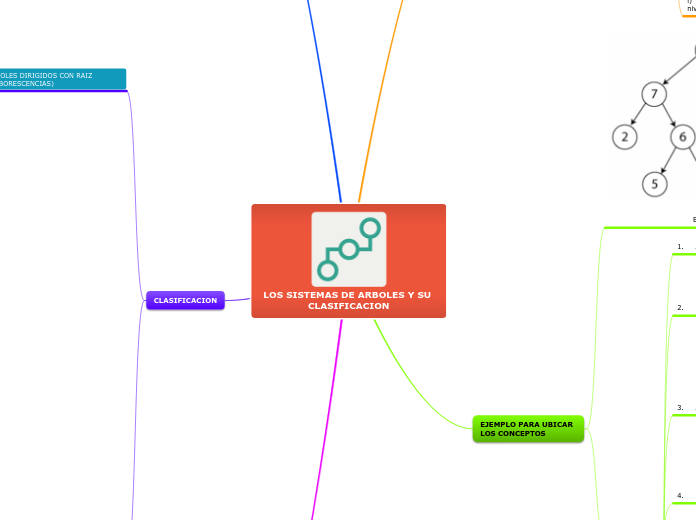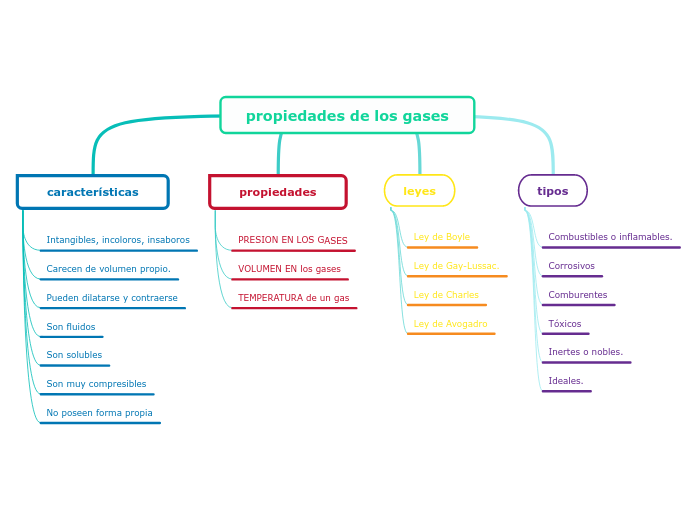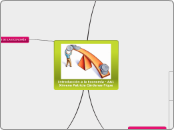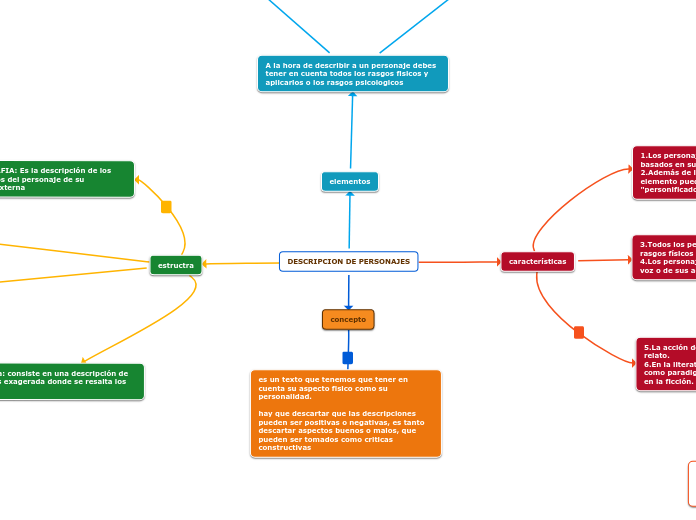LOS SISTEMAS DE ARBOLES Y SU CLASIFICACION
The Solar System is the gravitationally bound system of the Sun and the objects that orbit it, either directly or indirectly. Of the objects that orbit the Sun directly, the largest are the eight planets, with the remainder being smaller objects, the dwarf planets, and small Solar System bodies.
NO ARBOL
Saturn is known most for its rings.
Galileo Galilei first thought it was an object with three parts: a planet and two large moons on either side.
Not knowing he was seeing a planet with rings, the stumped astronomer entered a small drawing — a symbol with one large circle and two smaller ones — in his notebook.
The rings are made of ice and rock and scientists are not yet sure how they formed. The gaseous planet is mostly hydrogen and helium.
Tiene 2 o mas componentes conexos
A planet's day is the time it takes the planet to rotate or spin once on its axis.
Write down Saturn's day measured in Earth days.
Tiene ciclos
CLASIFICACION
Mars is a cold, desert-like place covered in dust. This dust is made of iron oxides, giving the planet its iconic red hue.
Mars shares similarities with Earth: It is rocky, has mountains, valleys and canyons, and storm systems ranging from localized tornado-like dust devils to planet-engulfing dust storms.
ÁRBOL GENERADOR DE MÍNIMO COSTE - ÁRBOL DE PESO MÍNIMO
Uranus is an oddball. It has clouds made of hydrogen sulfide, the same chemical that makes rotten eggs smell so foul.
It rotates from east to west like Venus. Its tilt causes extreme seasons that last 20-plus years, and the sun beats down on one pole or the other for 84 Earth-years at a time.
Methane in the atmosphere gives Uranus its blue-green tint. It also has 13 sets of faint rings.
VÍDEO SUGERIDO:Árboles | 12/42 | UPV
Uranus has 27 moons that we know of. Five of the moons are large and the rest are much smaller.
Name these 5 moons.
Moon name
CUESTION
How long does it take for Uranus to go around the sun?
- El que los pesos se repitan no obliga a que existan arboles generadores del mínimo coste distintos(puede ser único o puede no ser único).
- Si los pesos son distintos el árbol generador es único.
CARACTERISTICAS
- El árbol generador de mínimo coste de un grafo dado G no tiene por que ser único.
- Se llama árbol generador de mínimo coste de G a todo árbol generador de G cuyo coste sea menor o igual que el de cualquier otro árbol generador de G.
- Se llama árbol generador de G a todo subgrafo generador que sea conexo y aciclico.
- Sea G un grafo no dirigido conexo ponderado G=(V,E).
ALGORITMO DE KRUSKAL
A planet's day is the time it takes the planet to rotate or spin once on its axis.
Write down Uranus's day measured in Earth days.
- Si los pesos son distintos 2 a 2 el árbol generador de mínimo coste es único.
- El algoritmo de kruskal proporciona un árbol generador de mínimo coste
- Sea G no dirigido ponderado
ÁRBOLES DIRIGIDOS CON RAIZ (ARBORESCENCIAS)
Neptune is about the size of Uranus and is known for supersonic strong winds.
Neptune is far out and cold.
The planet is more than 30 times as far from the sun as Earth.
Neptune was the first planet predicted to exist by using math, before it was visually detected. Neptune is about 17 times as massive as Earth and has a rocky core.
VIDEO SUGERIDO:Árboles dirigidos con raíz | 13/42 | UPV
Subtopic
EJEMPLOS DE RELACIONES
Neptune has thirteen moons that we know of and one more waiting for confirmation.
The largest moon is slightly smaller than Earth's Moon and has active volcanoes which erupt like geysers and eject nitrogen frost over the surface.
Name this moon and at least 4 others.
En un árbol 𝑇 con raíz 𝑟, la relación 𝑅 definida como (𝑢, 𝑣) ∈ 𝑅 si 𝑢 ∈ 𝑟𝑇𝑣 es un orden parcial.
La relación “estar conectado con” sobre el conjunto de vértices de una gráfica 𝐺 es una relación de equivalencia.
La relación de adyacencia entre los vértices de una gráfica 𝐺 definida por las aristas en 𝐴(𝐺) es una relación simétrica y no reflexiva.
RELACIONES
How long does it take for Neptune to go around the sun?
- Cuando una relación es al mismo tiempo reflexiva, simétrica y transitiva se dice que es una relación de equivalencia.
- Cuando una relación es simultáneamente reflexiva, anti-simétrica y transitiva se le llama un orden parcial.
A planet's day is the time it takes the planet to rotate or spin once on its axis.
Write down Neptune's day measured in Earth days.
- Sea G= (V,E) un grafo dirigido con raíz V_0
- Sea G=(V,E) grafo subyacente de G
Se verifica que:
1.- existe un camino y solo uno desde V_0 a cada uno de los demás vértices.
2. - IEI=IVI-1
3. - G es aciclico
4. – G es conexo
5. – G es árbol
Sea G un grafo dirigido G =(V,E)
Se dice que G es un árbol con raíz V_0 si es un grafo acíclico tal que todos los vértices a excepción de V_0tienen grado de tiene uno y V_0 grado de entrada cero.
ARBOL
It was once considered a planet but in August 2006 the International Astronomical Union (IAU) downgraded the status of Pluto to that of “dwarf planet.”
Pluto is unlike other planets in many respects. It is smaller than Earth's moon; its orbit is highly elliptical.
It's a cold, rocky world with a tenuous atmosphere. Pluto is a very active ice world that's covered in glaciers, mountains of ice water, icy dunes, and possibly even cryovolcanoes that erupt icy lava made of water, methane or ammonia.
PROPIEDADES
Hay un único camino entre un par de vértices
Un grafo no dirigido G se dice que es un árbol si es conexo y acíclico
CONCEPTO
Our Solar System has eight “official” planets which orbit the Sun.
Each planet is at a different distance from the sun. Name its position.
- Los árboles forman una de las subclases de gráficas que más se utilizan. La ciencia de la computación hace uso de los árboles ampliamente, especialmente para organizar y relacionar datos en una base de datos. Los árboles surgen en problemas teóricos como el tiempo óptimo para ordenar.
EJEMPLO PARA UBICAR LOS CONCEPTOS
Venus is Earth's twin in size and has no moons.
Its surface has various mountains and volcanoes. Because of its thick, toxic atmosphere that's made of sulfuric acid clouds, Venus is an extreme example of the greenhouse effect. The average temperature on Venus' surface is 900 F (465 C).
Venus spins slowly from east to west, the opposite direction to most of the other planets.
The Greeks believed Venus was two different objects — one in the morning sky and another in the evening. Because it is often brighter than any other object in the sky, Venus has generated many UFO reports.
CONCEPTOS
How long does it take for Venus to go around the sun?
9. La altura del árbol es 4.
8. El nivel del nodo A es 1.
El nivel del nodo L es 4.
El nivel del nodo C es 2.
El nivel del nodo D es 3.
El nivel del nodo B es 2.
7. El grado del nodo A es 2.
El grado del árbol es 3.
El grado del nodo E es 0.
El grado del nodo D es 1.
El grado del nodo C es 2.
El grado del nodo B es 3.
6. B, D, F, C y H son nodos interiores.
5. I, E, J, K, G y L son nodos terminales u hojas.
4. B y C son hermanos.
J y K son hermanos.
G y H son hermanos.
D, E y F son hermanos.
3. A es padre de B.
H es padre de L.
C es padre de G.
D es padre de I.
B es padre de D.
2. B es hijo de A.
L es hijo de H.
D es hijo de B.
E es hijo de B.
C es hijo de A.
1. A es la raíz del árbol.
EJEMPLO
A planet's day is the time it takes the planet to rotate or spin once on its axis.
Write down Venus's day measured in Earth days.
• COMPONENTES (RAÍZ, HOJA, PADRE, HIJO, DESCENDIENTES, ANCESTROS).
Mercury is the smallest, only a little bit larger than Earth's moon. Mercury has no moon.
It experiences dramatic changes in its day and night temperatures: Day temperatures can reach a scorching 840 F (450 C), which is hot enough to melt lead. Meanwhile, on the night side, temperatures drop to minus 290 F (minus 180 C).
It also has a very thin atmosphere of oxygen, sodium, hydrogen, helium, and potassium and can't break-up incoming meteors, so its surface is pockmarked with craters, just like the moon.
i) Altura del árbol es el máximo número de niveles de todos los nodos del árbol.
h) Nivel es el número de arcos que deben ser recorridos para llegar a un determinado nodo. Por definición la raíz tiene nivel 1.
g) Grado es el número de descendientes directos de un determinado nodo. Grado del árbol es el máximo grado de todos los nodos del árbol, es decir, el grado más alto entre todos los nodos.
f) Todo nodo que no es raíz, ni terminal u hoja se conoce con el nombre de interior.
e) Todo nodo que no tiene ramificaciones (hijos), se conoce con el nombre de terminal u hoja.
d) Se dice que todos los nodos que son descendientes directos (hijos) de un mismo nodo (padre), son hermanos.
c) Un nodo X es antecesor directo de un nodo Y, si el nodo X apunta al nodo Y. en es caso es común utilizar la expresión X es padre de Y.
b) Un nodo X es descendiente directo de un nodo Y, si el nodo X es apuntado por el nodo Y. en este caso es común utilizar la expresión X es hijo de Y.
a) Todo árbol que no es vacío, tiene un único nodo raíz.









